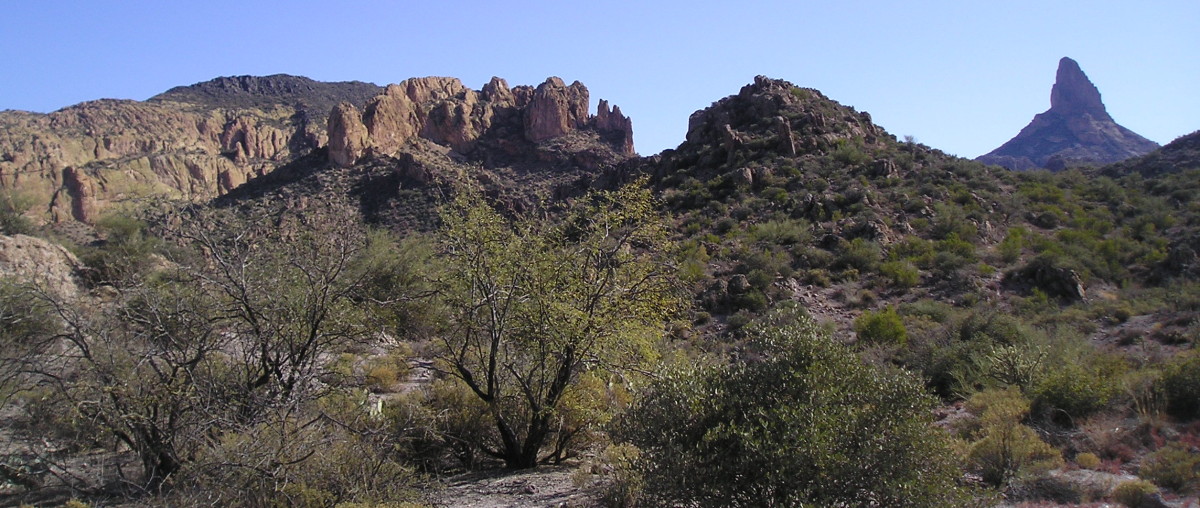By Tom Kollenborn
Immediately north of Don’s Camp are towering cliffs formed from volcanic lava some seventeen million years ago. This volcanic flow occurred during the Tertiary Period of geologic time.
Today these cliffs dominate the region around Don’s Camp. This landmark played an important role in the Don’s Club’s Annual Superstition Trek. Each year on the first Sunday of March, members of the Don’s Club pour several tons of burning charcoal over this cliff to create a spectacular firefall. This firefall is the highlight of their all-day event at base camp.
Historically this precipice has served as a natural barrier between the lower desert and the mountainous region of the Superstition Wilderness. Prior to 1930 this cliff was known as Lava Cliffs. Some time during the 1930’s Lava Cliffs became known as Dacite Cliffs.
Prospectors have dug shafts and tunnels along the Dacite Cliffs searching for copper, gold and silver for the past seventy years. Some of these tunnels are more than three hundred feet in length. Records indicate no gold, copper or silver has ever been found in sufficient quantity to justify these diggings.
Carney Springs, located on the west edge of the Dacite Cliffs, was the site of Camp Carney. Pete Carney started searching for gold in the area around 1908. Instead of gold, Carney found an abundance of copper stain. This led him to believe he had a rich copper mine. Peter G. Carney organized and operated the Lost Dutchman Mining Company. The company was incorporated on July 28, 1909. The incorporating officers were: J. Trincano; Carney’s brother, T.G. Carney; and G.W. Silverthorne.
In 1914, Pete Carney became involved in a feud with claimjumpers. This feud resulted in the death of Eli Koreavitch one of the miners who worked for Pete Carney.
George Silverthorne became a well-known Arizona poet during his tenure at Camp Carney. Silverthorne wrote daily while he sat beneath the towering Dacite Cliffs. His best known work is a book of Arizona poems.
Carney believed the Dacite Cliffs contained a fortune. He, too, was a dreamer. Today the region has returned to the coyotes, desert and the wind.
If you would like to visit the area, drive east eight miles from Apache Junction on Highway 60-70 toward Florence Junction. Turn left on Peralta Road (Forest Service Road No. 77) to Don’s Camp. The distance from Highway 60-70 to Don’s Camp is about eight miles. Peralta Road is a non-surfaced road, but is well maintained.
